The Cost of Diamond Shapes: A Comprehensive Guide
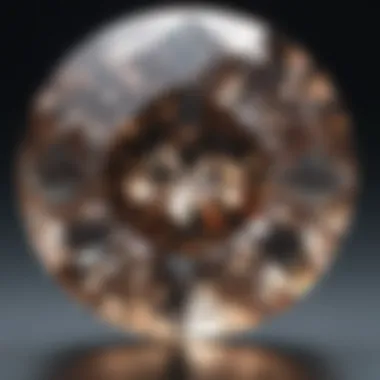
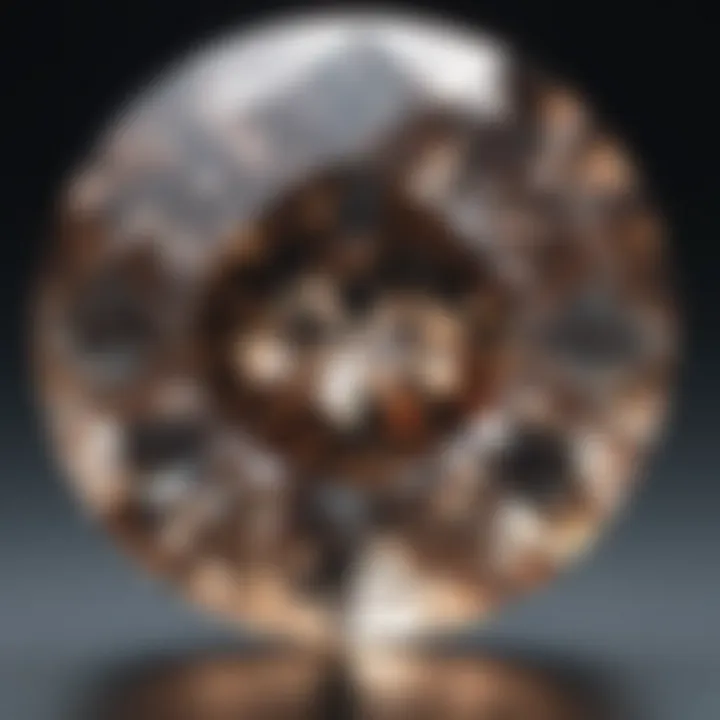
Intro
Diamonds, renowned for their beauty and rarity, are often seen as symbols of wealth and status. The shape of a diamond significantly influences its appeal and worth. As one delves into the world of gemstone luxury, understanding why certain diamond shapes are priced higher can unveil fascinating insights into market dynamics, consumer preferences, and artistry involved in crafting these precious stones. This exploration is not merely a look at the numbers but also an invitation to appreciate the artistry, skill, and history tied to these exquisite gems.
Gemstone Overview
Definition and Characteristics
Diamonds are a type of carbon crystal that forms under intense heat and pressure deep within the Earth. Their unique crystalline structure gives them remarkable durability and brilliance. When assessing diamonds, several key characteristics come into play:
- Cut: Refers to how well a diamond has been shaped and faceted. It affects its sparkle and light return.
- Color: Ranges from colorless to shades of yellow and brown, with less color generally signifying higher value.
- Clarity: Measures the presence of internal or external flaws, referred to as inclusions and blemishes, respectively.
- Carat Weight: Refers to the size of the diamond, impacting its overall price.
Classification of Gemstones
The vast universe of gemstones doesn’t only include diamonds. They can be categorized based on various criteria. For instance, diamonds can be classified into two categories: natural and synthetic. Natural diamonds are formed over millions of years, while synthetic diamonds are created in labs, often costing significantly less.
Different cuts of diamonds also sway their categorization. Round, princess, and pear shapes are among the most popular cuts and can command differing prices depending on market demand.
Historical Significance
Ancient Uses and Cultural Importance
Historically, diamonds have been imbued with significance beyond their monetary value. In ancient India, diamonds were believed to bestow protection, strength, and invincibility. They adorned crowns and were set in religious artifacts, symbolizing both power and spirituality.
Interestingly, these stones were not always as coveted by the general populace as they are today. It wasn't until the 15th century, when diamonds became more accessible due to advancements in mining and cutting techniques, that their popularity surged in Europe and the Western world.
Myths and Legends Surrounding Gemstones
Like many precious substances, diamonds are entwined with a plethora of myths and legends. One of the most fascinating is the belief that diamonds can shield their owners from harm. In ancient folklore, it was said that diamonds could deter evil and bring good fortune. This belief persists today, with some people still attributing mystical properties to diamonds, adding a layer of allure that perpetuates their high demand.
"Let the allure of diamonds not just be measured in carats but also in the stories they carry through history."
Understanding these facets of gemstones might well enrich one’s appreciation for diamonds, particularly those shapes that garner the highest prices. Each cut, each lens through which we view their history, offers insights into what makes certain shapes so desirable in today’s marketplace.
Understanding Diamond Shapes and Their Significance
Diamonds are more than just beautiful gems; their shapes tell a story. The shape of a diamond plays a significant role not only in its aesthetic appeal but also in its valuation within the market. When considering diamonds from a buying or investment standpoint, understanding the shape really boils down to recognizing how it can influence both the costs associated with it and the sentiment around its ownership. A diamond's cut can transform a raw stone into something that sparkles with a life of its own. Like a well-tailored suit, the right shape enhances its worth and beauty.
Some shapes resonate deeply with traditions and emotional connections, often linked to cultural ceremonies or personal milestones. For example, the round cut is often favored for engagements, largely due to its brilliance and ability to refract light spectacularly. Meanwhile, more unconventional shapes like the pear or marquise cuts can signify a desire to stand out. Not every gem client looks for the same sparkle, and that's where the importance of shapes comes into play.
In this article, we'll delve deep into the various diamond shapes, exploring how their distinct characteristics shape their market values and overall desirability. Understanding these nuances can aid both buyers—who wish to choose a diamond that reflects their intentions—and collectors—who may see the value in unique shapes that can set their collections apart.
The Historical Context of Diamond Shapes
Tracing back the history of diamond shapes reveals a rich narrative intertwining craftsmanship, societal norms, and economic demands. The round brilliant cut is one of the oldest shapes, having been shaped by centuries of refinement and technological advancements. Historical records indicate that the first facets appeared on diamonds in the late 1300s, originally intended to enhance the gem's natural beauty.
Each epoch adopted its preferences for shapes, dictated by the prevailing fashions and cultural significance of the time. For instance, during the Renaissance, the rose cut became popular, reflecting the era's artistic inclinations. In contrast, the 19th century saw the rise of cushion cuts, as the demand for larger, more radiant gems grew alongside the wealth of the diamond trade.
In observing the evolution of these cuts, it's evident that shapes are not static; they adapt to the social and economic currents of their time.
Cultural Perspectives on Diamond Cuts
The allure of diamonds transcends borders, echoing varied cultural perceptions and significance across the globe. Take India, for instance, where diamonds have been cherished for centuries and are often linked to traditional lore. Shapes like the princess cut speak to modern tastes, while many still favor the rose cut as a nod to heritage. In Western cultures, the round cut has become synonymous with engagement rings, often regarded as the 'ultimate' choice.
Nationwide customs also lend weight to different preferences. In Asia, diamonds are not solely seen as tokens of romance but as symbols of wealth and status, thus resulting in a different set of prized cuts. The impact of cultural heritage is profound, influencing both purchasing behavior and valuation in various markets.
In sum, diamond shapes are not just a reflection of personal taste; they encapsulate rich historical narratives and cultural values, bridging the past, present, and future realms of diamond appreciation.
Criteria for Diamond Value Assessment
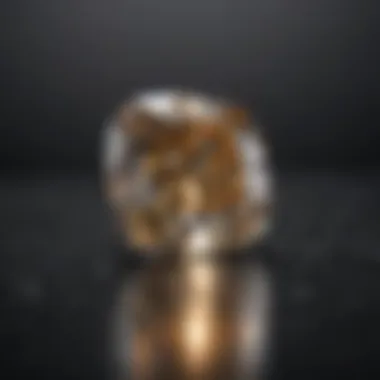
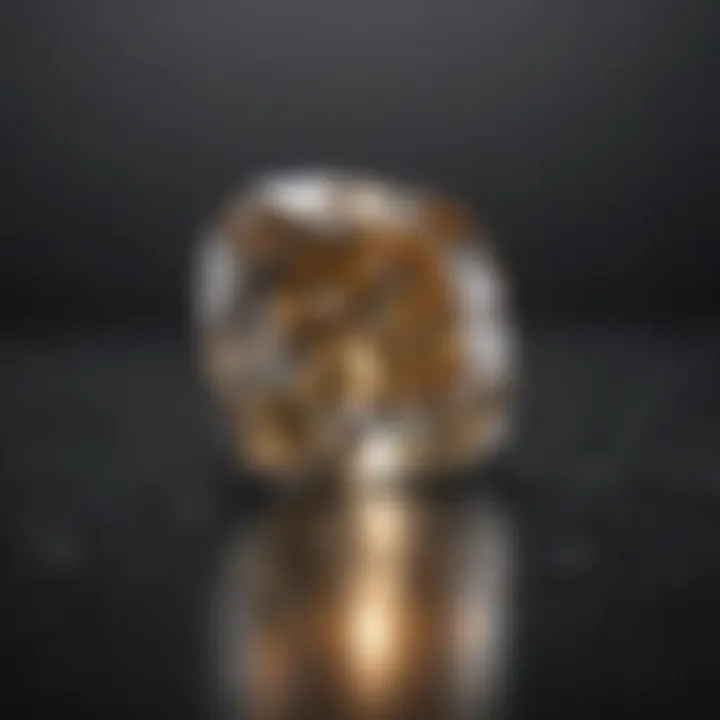
Understanding the various criteria for assessing diamond value is vital to comprehending how and why certain shapes command higher prices in the market. Knowing these elements helps buyers make informed decisions, whether they are collecting jewels for personal delight or for investment purposes. This section outlines the core aspects that contribute to a diamond's overall value, ensuring that even the most novice gemstone enthusiasts grasp the essentials of this fascinating field.
The Four Cs: Cut, Color, Clarity, and Carat
The Four Cs – cut, color, clarity, and carat weight – are the foundational pillars of diamond evaluation. Each aspect plays a distinct role in determining both the beauty and the cost of a diamond.
- Cut: This is arguably the most crucial factor, as it shapes how light interacts with the stone. The brilliance and sparkle largely depend on how well the diamond has been cut. A superb cut can elevate a lower-quality diamond to stunning heights, while a poor cut can diminish even the most exquisite stone.
- Color: Color grades range from completely colorless to light yellow or brown. Generally, the less color, the higher the value. However, certain fancy colors, like deep blue or vivid pink, can drastically shift this conversation and lead to immensely valuable stones.
- Clarity: Clarity refers to the presence of imperfections or inclusions within the diamond. The fewer the flaws, the more valuable the diamond. Nevertheless, some collectors appreciate unique inclusions that tell the stone's story, raising the stakes in the clarity discussion.
- Carat Weight: Carat weight refers to the size of the diamond, influencing its price directly. Larger stones are indeed rare, and their prices can jump exponentially with even a slight increase in weight.
Understanding these Four Cs not only helps in value assessment but also enriches the buying experience, allowing individuals to choose diamonds that resonate with personal criteria and tastes.
Market Demand and Its Impact on Prices
Market demand is another critical factor influencing diamond pricing. The economics of supply and demand can make or break a diamond's market value.
- Trend Dynamics: If a particular cut, like the radiant cut, suddenly becomes trendy, its price can skyrocket due to the heightened demand. Conversely, if a once-popular shape fades into obscurity, its value can plummet. Keeping an eye on emerging trends—often influenced by celebrities or social media—can guide buyers in making astute purchases.
- Cultural Expectations: Cultural shifts also play a role in how shapes are valued. For instance, certain regions may show preference for classic shapes, while others lean towards contemporary designs. These preferences can create localized demand spikes that affect pricing.
"Diamonds are not just gems; they are a reflection of societal values and cultural mores."
- Global Market Factors: Fluctuations in the economy can impact consumer spending willingness, which affects overall demand for luxury items like diamonds. In times of economic downturn, the demand may wane, leading to reduced prices and vice versa in booming times.
Understanding the market demand landscape requires ongoing research, as it constantly evolves in response to global trends and consumer behaviors. The most successful buyers and collectors are those who grasp both the artistic and economic dynamics of diamond shapes, creating a rich tapestry of knowledge that enhances their collecting journey.
Overview of Popular Diamond Shapes
In the realm of gemstones, diamond shapes are more than mere aesthetics; they carry weight in both style preferences and valuation. Each shape exhibits its own character, influencing not only how light plays through it but also how it resonates with different tastes and preferences. Recognizing popular diamond shapes is paramount for any buyer or enthusiast looking to navigate through a plethora of choices, as these forms can often dictate market trends and resale values.
Understanding the appeal of various diamond shapes brings forth important considerations:
- Value and Rarity: Certain shapes, like the round cut, have established themselves at the apex of the luxury market. Others, like the Asscher cut, may offer unique opportunities for investment due to limited supply.
- Personal Preference: The choice of shape often reflects personal style, ranging from the classic to the contemporary, indicating buyers’ diverse inclinations.
- Fashion Trends: Consumer preferences can shift over time, with some shapes becoming trendy as celebrities and influencers embrace them in prominent settings.
Gaining insight into these nuances guides buyers and collectors in making informed decisions while also appreciating the deeper significance behind each cut.
Round Cut Diamonds
Round cut diamonds, with their perfectly symmetrical design, are undeniably the perennial favorite among consumers. Their timeless presence stands as a testament to their cutting-edge brilliance, as the round cut is known to maximize sparkle and light reflection. These diamonds typically hold their value exceptionally well, due to high demand and popularity among brides and grooms alike. This shape is frequently associated with tradition, making it a go-to for engagement rings and other significant romantic gifts.
Princess Cut Diamonds
When considering a modern alternative, the princess cut stands proudly. This square or rectangular shape is celebrated for its contemporary elegance and striking faceting. It captures light in a brilliant way, appealing particularly to younger generations seeking something a bit different yet sophisticated. The versatility of the princess cut allows it to shine in a variety of settings, from vintage styles to sleek modern designs.
Emerald Cut Diamonds
Emerald cut diamonds feature long, elegant straight lines that create an oblong shape and a distinctive "hall of mirrors" effect. As a shape, it radiates vintage glamour, often favored by those who appreciate a certain old-world charm. The step-cut technique used in crafting emerald cuts allows for greater visibility of clarity, making it essential for buyers to consider the stone's inclusions closely. Its popularity seems to thrive in settings that evoke a sense of luxury and timelessness.
Cushion Cut Diamonds
Cushion cut diamonds encapsulate a blend of old and new styles. Resembling a pillow, they feature rounded corners and larger facets, allowing for a softer sparkle. They are a hybrid of the classic round and more modern shapes, drawing interest from those who appreciate something unique yet familiar. Many opt for cushion cuts for rings that tell a romantic story, as they seem to carry an air of intimacy matched with durability.
Asscher Cut Diamonds
Often equated to the emerald cut's cousin, the Asscher cut possesses a square shape with distinctive deep facets that can be enchanting. With roots in the Art Deco era, this diamond shape appeals to collectors and those drawn to bespoke jewelry. Its rarity in comparison to other shapes increases its desirability, especially among those looking for a standout piece that speaks to both elegance and exclusivity.
Oval Cut Diamonds
The oval cut presents a unique twist on the classic round shape, making it an enticing choice for buyers seeking lengthening effects for fingers. This design allows for a captivating sparkle akin to that of the round diamond while offering a modern flair. As fashion trends evolve, the oval shape continues to find a steady place in the market, appealing to those who want a slightly different take without straying too far from tradition.
Marquise Cut Diamonds
Marquise cut diamonds, with their elongated shape, tap into a regal elegance that has remained popular over time. Their distinct design draws the eye and creates an illusion of larger size, thus enhancing perceived value. While it may not be the primary choice for many, it resonates well within niche markets, particularly appealing to those who favor unique designs and historical significance.
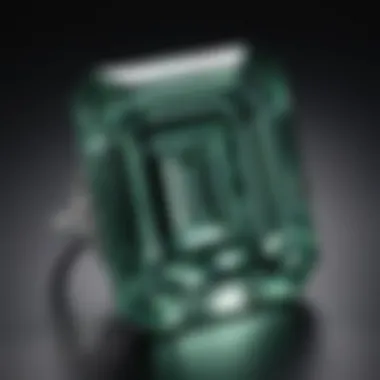
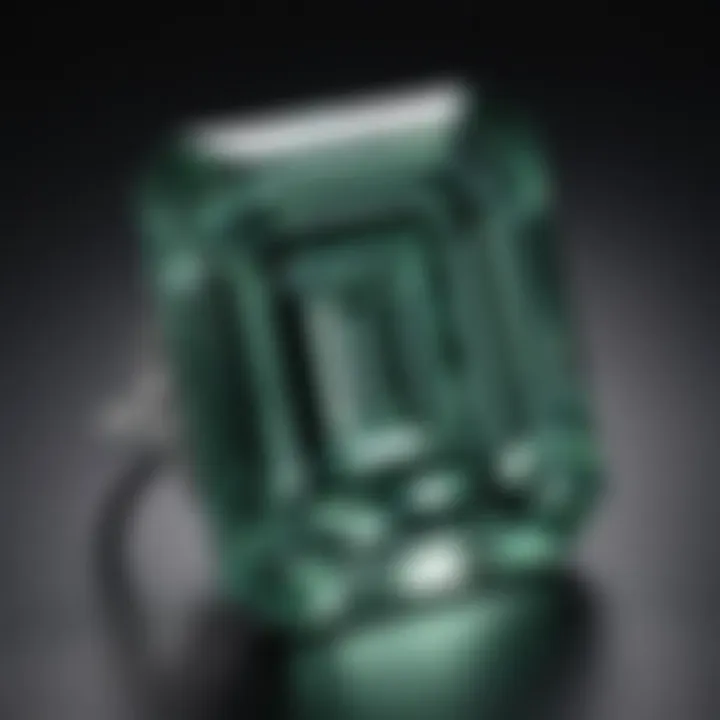
Radiant Cut Diamonds
Radiant cut diamonds combine the powerful brilliance of round cuts with the geometric shape of rectangular or square diamonds. This hybrid cut offers magnificent sparkle alongside the captivating shape, making it an excellent choice for those looking for something eye-catching yet not overly conventional. Its unique balance of form and function continues to charm buyers looking for a diamond that stands apart in a sophisticated manner.
The choice of diamond shape can reflect not just personal style but also investment potential, as demand fluctuations can affect value significantly.
Each diamond shape brings its own flair to the table, inviting exploration and thoughtful selection. Recognizing the distinct characteristics and market positions of these shapes is crucial for anyone wishing to invest in or purchase diamonds with both beauty and lasting value.
Factors Influencing the Price of Diamond Shapes
Determining the cost of diamond shapes is a multi-faceted process involving a confluence of various elements. Each factor plays a crucial role in establishing the price tag that accompanies these glittering gems.
Understanding these facets can aid both potential buyers and sellers in making educated decisions in the diamond market. The appeal of diamonds transcends their physical beauty; they also embody emotional and financial significance. Splurging on a diamond often reflects personal milestones, cultural traditions, or investment aspirations. So, delving into the key influences on diamond pricing is invaluable for both enthusiasts and serious investors alike.
Rarity of Shapes and Market Exclusivity
When talking about diamonds, rarity is often the name of the game. Certain shapes, though they may not be the most popular, often command higher prices simply because they are less common. For instance, marquise and asscher cut diamonds are not as ubiquitous as the round or princess cuts, which makes them more sought after by connoisseurs.
- Limited Availability: Shapes like the heart-cut or radiants may only be produced in small quantities, which inherently increases their allure and often their price. In a world driven by appearances, exclusive options tend to outshine the more common choices.
- Cultural Significance: Rarity in shapes often translates to cultural meanings. For example, in some cultures, diamonds in specific cuts might be seen as more auspicious or significant, which can boost their market desirability.
"In the diamond game, the rare ones shine brighter, becoming not just a purchase, but an investment in rarity itself."
Popularity Trends in Gemstone Buying
In the realm of diamonds, being on trend can have a profound impact on pricing. Consumer preferences are ever-evolving, and what was once en vogue can quickly fade into obscurity.
- Shifts in Fashion: Trends ebb and flow, often dictated by influential figures in celebrity culture or fashion design. For instance, when celebrities like Meghan Markle flaunt a specific cut, interest can skyrocket. This can lead to inflated prices for that shape or style as demand surges.
- Social Media Influence: Platforms such as Instagram and Pinterest have accelerated these trends. Pear-shaped diamonds are becoming more popular, largely due to their aesthetic appeal shared across social media, impacting their availability and price.
The Most Expensive Diamond Shapes
When considering the world of diamonds, the shapes that command the highest prices are of significant importance for gem enthusiasts, investors, and collectors alike. Understanding what makes certain diamond shapes more valuable than others offers insights into market behaviors and trends. Each shape has its unique characteristics, historical significance, and aesthetic appeal, which contribute not only to its allure but also to its price tag. This section delves into the intricacies of the most expensive diamond shapes, providing a nuanced understanding of their desirability and investment potential.
Why Round Diamonds Lead in Price
The round cut diamond consistently reigns supreme when it comes to market value. This shape is universally recognized for its brilliance and sparkle, achieved through its ideal proportions and precise facet placement. It accounts for an impressive percentage of all diamond sales, a testament to its popularity.
One could argue that round cut diamonds are akin to the 'little black dress' of the jewelry world—classic, versatile, and always in vogue. The cut allows for maximum light reflection, giving it an unparalleled glow that captivates the beholder. Additionally, the demand has been inflated by cultural traditions, such as engagement rings, where the round diamond has become synonymous with love and commitment.
It’s worth noting that the quality grading also plays a pivotal role in pricing. The round diamond receives its highest value when it possesses excellent cut quality, color grading, and clarity. Thus, investors often seek out these attributes, confirming the round diamond’s status as a staple in both personal collections and financial portfolios.
The Rising Popularity of Asscher and Cushion Cuts
In recent years, the Asscher cut and Cushion cut diamonds have gained traction, challenging the supremacy of the round cut. The Asscher cut, with its square shape and cropped corners, exudes a vintage charm reminiscent of the Art Deco era. This shape appeals to collectors looking for something distinctive yet timeless.
Conversely, the Cushion cut combines a classic shape with a modern twist. Its larger facets allow more light to enter the diamond, producing a mesmerizing play of light. As aesthetics evolve, many buyers are gravitating towards these cuts, not only for their unique appearance but also because they often present a better value compared to their round counterparts.
The rise in popularity can be attributed to factors like celebrity endorsements and popular media, which put these shapes in the spotlight. The cultural embrace of nostalgia and individuality in jewelry design has made both the Asscher and Cushion cuts worthy investments for discerning collectors.
Emerald Cuts: The Timeless Appeal
Emerald cut diamonds have a character all their own, showcasing elegance through their step-like facets and elongated rectangular shape. People often describe emerald cuts as exuding a sort of quiet luxury—subtle yet striking. This shape, while perhaps not as brilliant as the round cut, offers its own kind of beauty that many enthusiasts find appealing.
Historically, emerald cuts were favored by royalty, earning them an aura of sophistication. Their allure continues today, especially among those seeking fewer sparkles but greater clarity. Given the cut's ability to highlight a diamond's quality, flaws can be more visible, but this transparency also conveys authenticity and integrity—traits highly valued by collectors.
As fashion trends shift towards classic and understated pieces, the emerald cut has solidified its place as a timeless choice, often retaining its value well over time. This makes it not only an aesthetic choice but also a smart investment for anyone looking to diversify their diamond collection.
"The shape of a diamond can tell you a lot about its worth and the trends that characterize the market. Round diamonds, with their brilliance, shine brightly, but emerging shapes bring their own flair that can be just as impactful."
Paying attention to diamond shapes can offer insight into current design trends and consumer preferences, ultimately guiding both personal choices and investment strategies.
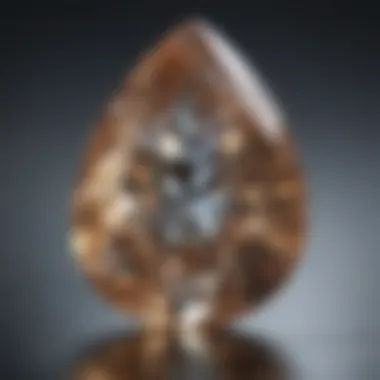
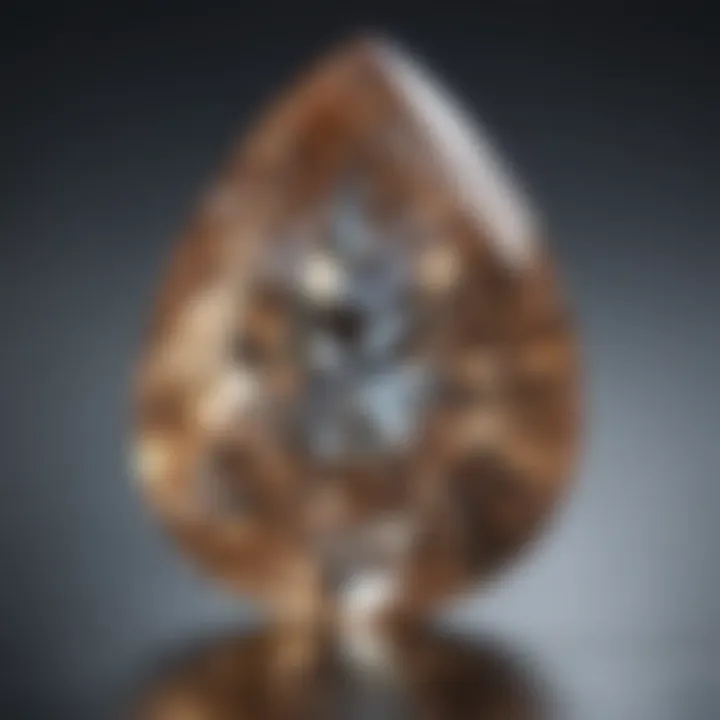
Investment Potential of Different Shapes
When embarking on the journey of investing in diamonds, understanding the investment potential of different shapes becomes essential. As diamond shapes not only dictate aesthetic appeal but also bear implications for value retention and appreciation, discerning buyers must position themselves strategically within this expansive market. Collectors, investors, and enthusiasts alike find themselves drawn to the intricacies of diamond shapes, each with their unique trajectories in terms of market demand and resale potential.
The allure of diamonds isn't merely in their sparkle but in their capability to serve as a robust investment. As with any investment, buyers are often urged to do their due diligence—knowing what shapes to look for will ultimately empower them to make sound decisions that align with their financial goals.
Collectibility and Resale Value
When it comes to collectibility, certain diamond shapes naturally garner more attention than others. Collectors often view the resale value of their purchases as a critical component of their investment strategy. Round cut diamonds, often celebrated for their brilliance, tend to hold their value best in the secondary market. However, amidst rising demand, shapes like the Asscher and Cushion cuts are now entering the fray as compelling options, indicating a shift in collector preferences.
Factors Influencing Collectibility
- Market Trends: As tastes evolve, specific shapes may surge in popularity, affecting their resale attractiveness.
- Rarity: Limited availability can transform a common shape into a sought-after gem. The rarity of some cuts can significantly enhance their collectibility and lure investors seeking to diversify their portfolios.
- Provenance: Diamonds with a storied past or those associated with famous individuals often fetch a higher price at resale.
Understanding these factors not only aids potential buyers in recognizing value when acquiring diamonds but also equips them with knowledge to negotiate better in the future.
Trends in Investment Grade Diamonds
A shifting landscape in the diamond market presents investors with new possibilities. Investment grade diamonds, those that stand out due to their superior quality and unique characteristics, are emerging as an attractive sector within the broader market.
Notable Trends
- Preference for Fancy Shapes: While round diamonds have traditionally dominated, there's been a rising inclination towards unique cuts, like the Pear and Heart shapes. This evolution reflects a broader cultural paradigm, especially among younger buyers who value individuality over tradition.
- Increased Transparency: The introduction of technology such as blockchain in the diamond trade is leading to more transparency in the sourcing and grading of diamonds. Investors are becoming more savvy; they can now track the provenance of their stones, adding value to their investment.
- Sustainability Considerations: As consumers grow increasingly conscious of ethical sourcing, diamonds from sustainable sources are gaining traction. An investment in ethically sourced diamonds can yield both financial returns and contribute to a cause, making them a double-edged sword for conscientious investors.
Future Trends in Diamond Shape Value
As we look forward in the gemstone market, understanding the future trends in diamond shape value becomes crucial. With evolving styles and a continuously changing buyer landscape, various elements influence how consumers perceive value. The dynamics of social media, celebrity endorsements, and eco-conscious choices are reshaping the industry, making it essential to forecast these shifts. By grasping these trends, collectors and investors can better position themselves in a market that often looks to the future for inspiration.
Forecasting Market Shifts
In the realm of diamonds, the market is anything but static. Analyzing past and present trends can provide valuable insight into future directions. A few key factors influence these market shifts:
- Social Influences: The rise of social media platforms, such as Facebook and Reddit, has allowed consumers to share preferences and opinions more easily, leading to rapid changes in what shapes are considered in vogue.
- Cultural Shifts: The increasing prominence of personalized items has made unique cuts more desirable. This shift toward individual expression has led to a growing interest in shapes like the rose cut or kite cut—previously overshadowed by classics.
- Sustainability Concerns: There’s more focus on ethical sourcing, leading buyers to be more selective about where and how their diamonds are sourced. This trend can strongly influence which shapes become more desirable based on the producers’ practices.
"In gemstones, sentiment drives the market. What people desire today may not be the same tomorrow."
By monitoring these indicators, stakeholders can better predict which shapes might gain value.
Consumer Preferences and Their Evolution
As consumer preferences evolve, so too does the enigmatic allure of various diamond shapes. Several aspects crucially shape buyer preference:
- Aesthetic Trends: As new fashions come and go, the popular diamond shapes fluctuate. Currently, for instance, asymmetrical and non-traditional forms are gaining ground. Accessories that stray from the classic cuts can attract interest due to their unique visuals.
- Celebrity Influence: Whether it's the latest celebrity engagement or a trend-setting influencer, public figures continue to shape perceptions around diamond preferences. When celebrities flaunt unorthodox shapes, it can result in an uptick in demand.
- Generational Changes: Younger buyers often favor diamonds that align with their values, gravitating toward unique designs and eco-friendly practices. This shift impacts the market significantly as millennials and Gen Z take the lead.
- Cultural Context: Different cultures have varying symbols associated with diamond shapes. For instances, the princess cut, fresh on the market, might resonate more with modern couples, while others might lean towards more classic styles for their timelessness.
Overall, as we keep an eye on these evolving consumer preferences, it becomes clear there's no one-size-fits-all approach to diamond purchasing. Instead, the emphasis is shifting toward personal affinity and emotional connection with the stones they choose.
Practical Considerations for Buyers
When it comes to investing in diamonds, understanding the practical considerations is essential. This part of the article aims to guide buyers through a maze of choices and help them make informed decisions. The diamond market can often feel like a jungle, with numerous shapes, sizes, and prices to decipher. Knowing what to look for can save precious time and, more importantly, money.
Assessing Personal Preferences and Needs
Each diamond shape has its unique charm and appeal, which often reflects the buyer's personality and style. Therefore, assessing personal preferences is the first step towards finding the perfect diamond.
- Aesthetic Appeal: Does a round shape appeal to classic tastes while a princess cut may suit a more modern flair? Understanding one's inclinations can narrow the search dramatically.
- Usage Context: Consideration of how the diamond will be used is crucial. Will it be for an engagement ring, a statement necklace, or an investment piece? This will sway preferences toward specific shapes that make the most sense for the occasion.
- Comfort and Lifestyle: A significant diamond may turn heads, but is it practical for everyday wear? A low-profile setting may be favored by someone who leads an active lifestyle.
Ultimately, aligning diamond choices with personal values and lifestyle necessities creates a more fulfilling purchasing experience.
Understanding the Value Beyond Aesthetics
Diamonds are fascinating not just for their beauty but for their intrinsic value and market dynamics. Recognizing the factors influencing diamond value is paramount for those looking particularly at investment or collector's pieces.
- Market Trends: The shape of a diamond can significantly influence its value in the marketplace. For example, round shapes typically enjoy high demand, driving prices up. Staying informed about evolving market trends can enhance a buyer's negotiating power.
- Resale Value: Not all diamond shapes retain their value equally. Researching which cuts are regarded as collector's items can provide insight. Asscher and cushion cuts, for example, have recently surged in popularity. Such trends might indicate potential future value.
- Symbolic Value: Beyond monetary implications, diamonds often carry sentimental weight. Buyers should consider how the diamond will connect personally, whether as a family heirloom or a symbol of love.
Understanding these aspects can be the difference between merely acquiring a diamond and making a sound investment decision. With the right knowledge, buyers can journey into the diamond world confidently, ensuring they not only appreciate the visual beauty but also understand the surrounding intricacies.







